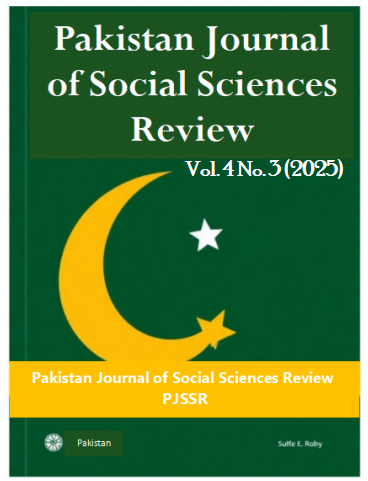INVESTIGATING THE IMPACT OF 2010 FLOODS ON URBAN LAND USE LAND COVER CHANGE IN THE NOWSHERA CITY OF KHYBER PAKHTUNKHWA, PAKISTAN
Abstract
The spatial and temporal pattern of Land Use Land Cover Change (LULCC) of a particular area is the expression of human-environment interaction. The important anthropogenic agents of LULC are rapid population growth and urbanization. However, several natural processes such as floods, earthquakes, desertification, etc. are also responsible for LULC. The present study utilizes the geospatial technologies to map and compute the LULC that took place in the study area resulting from 2010 floods. Landsat 5 image of 1998 with 30m resolution and 2008 image of SPOT-5 with 5m and 10m resolutions were used in this study. The analysis of the classified image of 1998 reveals that a decrease of only 1.39% in agriculture/vegetation cover was recorded in 10 years during 1998-2008. An increase of 2.7% was found for the built-up environment during 1998-2008. Similarly, an analysis of the 2018 classified image reveals a decrease of 2.22% for agriculture/vegetative during 2008-2018. This decrease is attributed to a corresponding increase in the built-up area. The built-up area shows a remarkable increase of 9.38% of the total area in 2008 and 18.05% in 2018. This study showed a rapid LULCC in Nowshera city in the last 20 years during 1998-2018. Furthermore, the present study found a strong connection between LULCC and the 2010 floods in the Kabul River where the land use land cover patterns were influenced to a greater extent by July 2010 floods. In 2008 the built-up area show increase in the area located close to river Kabul in booth Nowshera Kalan and Nowshera Cantonment. But after the 2010 floods, the extension of the built-up area is mostly on barren land in the south of the city. It is recommended that agricultural land protection must be comprised at all levels of land use plans and the farmland boundary must be identified and defined in town level land use plans.
Keywords
Land Use Land Cover Change (Lulcc), Urban Sprawl, Floods, Gis, Remote Sensing


